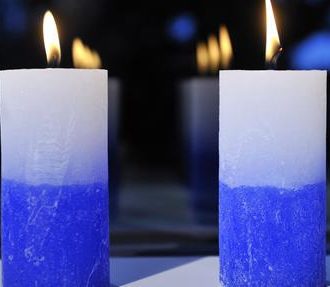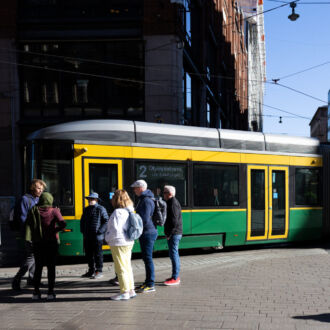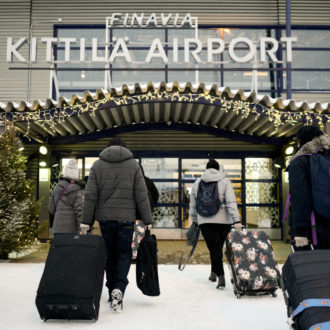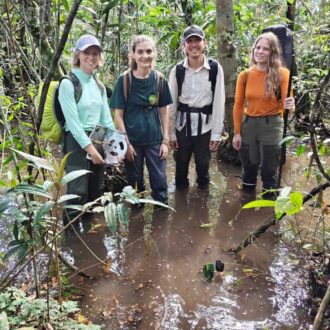In one of Tove Jansson’s books we meet Muskrat, a grumpy philosopher temporarily living with the Moomin family. A cake has mysteriously gone missing from the dining table, but Muskrat couldn’t be bothered—he’s simply trying to ruminate in peace in the corner. After some investigation, we discover he’s sitting on the very cake.
Muskrat’s antics are just one of countless examples of Jansson’s ability to capture the essence of what makes us human. Best known for her Moomin characters, she was a prolific and multi-talented artist—painter, illustrator, cartoonist, and writer. Her body of work could easily fill several lifetimes.
“Her pen stroke is vivid, soft, beautiful, and inimitable. It is one of the finest things in the world,” says the art historian and non-fiction writer Tuula Karjalainen, the author of Tove Jansson: Work and Love, a biography.
To live freely
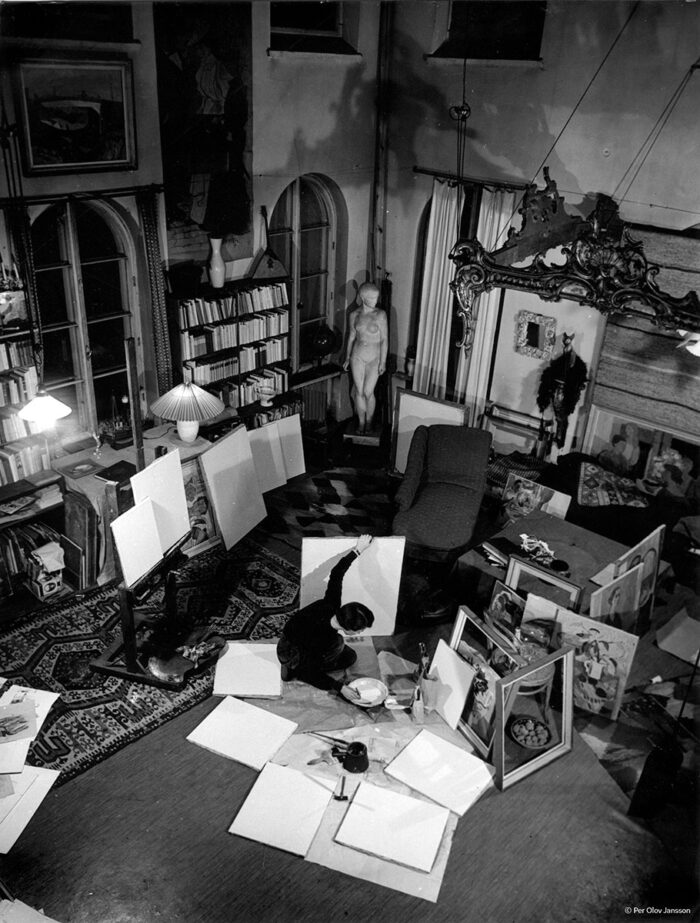
Katajanokka and Kaartinkaupunki, Helsinki: Tove Jansson was born in 1914 and spent her childhood in Katajanokka, a maritime neighborhood in downtown Helsinki. She often painted at the foot of the Uspenski Cathedral, the largest Orthodox cathedral in Western Europe. A nearby park is named after her.
As an adult, Jansson worked and lived in a high-ceiling atelier at Ullanlinnankatu 1, bathed in natural light. A permit from Moomin Characters Ltd. is required for group visits but passers-by can admire a relief of the young Jansson on the building’s exterior. Photo: Per Olov Jansson
In Jansson’s beloved novel The Summer Book, Grandmother teaches Sophie about the importance of making one’s own choices, saying, “everything is fine as long as one can just be free.” This sums up Jansson’s life philosophy quite nicely.
Freedom is a significant theme in Jansson’s works, often embodied by her characters. For example, there’s the Moomin character Snufkin – a solitary wanderer who sleeps in a tent and plays a melancholic harmonica. When summer is over, he packs his belongings and leaves Moominvalley for the winter.
Although her works have become widely loved by audiences around the world, Jansson painted, drew, and wrote only for herself. This was a way of living freely; the fight she fought for her entire life.
As a child, she was allowed to roam around the family’s home by the seaside in Helsinki on her own. The Jansson family spent their springs and summers on an island east of Helsinki surrounded by the archipelago’s wild nature. Although she would later study at the prestigious École des Beaux-Arts in Paris, among other institutions, she struggled with early education.
“She was more interested in the thrilling stories of adventures her mother read to her than school,” Karjalainen says. As it happens, there is no school in Moominvalley.
Love letters to the sea
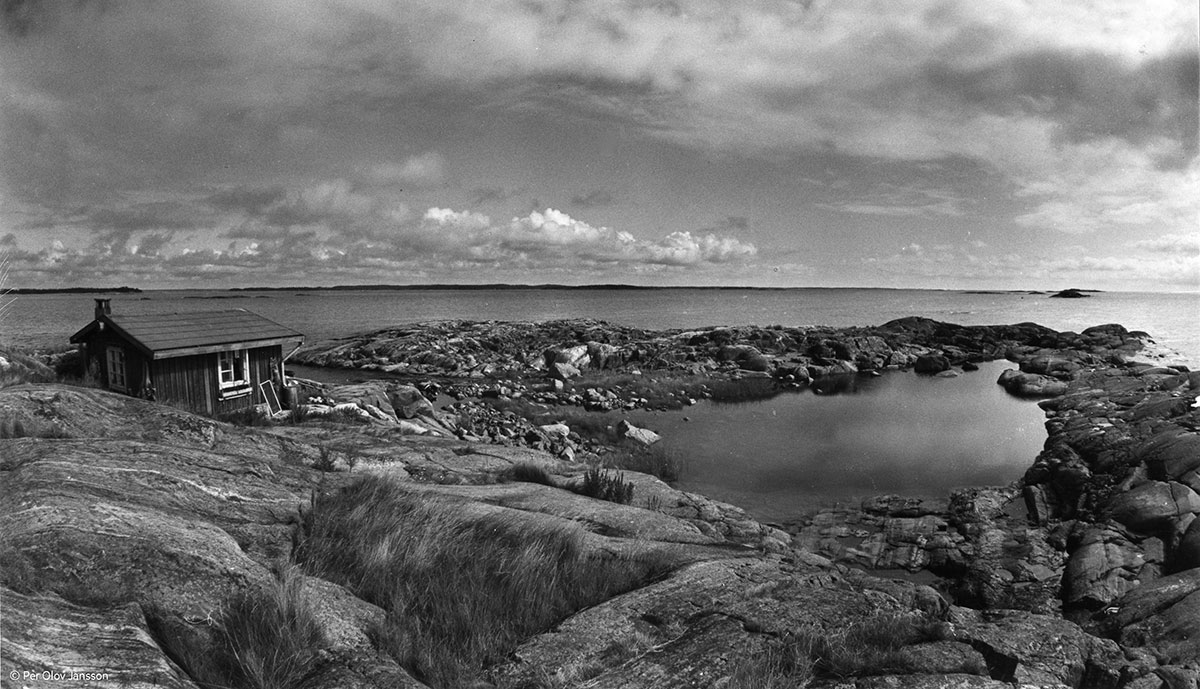
Klovharun Island: The Pellinge archipelago near Porvoo has profoundly influenced Jansson’s life and work. She spent 28 summers on Klovharun island with her life partner Tuulikki Pietilä, later donating their cottage to the local heritage association. Klovharun and the surrounding islets form a nature reserve. Photo: Per Olov Jansson
Most of Tove Jansson’s life was set against a maritime backdrop. Perhaps it was the sea’s boundlessness that Jansson herself wanted to embody. The sea does what it wants: “foaming recklessly, raging furiously, but somehow tranquil at the same time,” she writes in Moominpappa at Sea. The same body of water that provides a refreshing oasis for Moomins to frolic can suddenly turn into an unpredictable and even frightening force that can sink a boat or tear a tent apart.
“She worshiped the sea. She could spend long periods alone in the archipelago, even though she was afraid of the dark. The sea strengthened her sense of freedom,” Karjalainen says.
Some of Jansson’s writing took place literally in the middle of the sea, on an island that greatly influenced her. Jansson spent many summers on Klovharun Island in Pellinge, in the archipelago east of Helsinki, with her long-time life partner, graphic artist Tuulikki Pietilä.
The small, rocky Klovharun was difficult to access, and there was no electricity or running water. Yet Jansson and Pietilä felt drawn to the island and built a cabin there. When it finally stood on the Klovharun, it was exactly as the partners had hoped: four walls, four windows, and a shared desk where they could draw and write.
One long dance of rich adventure
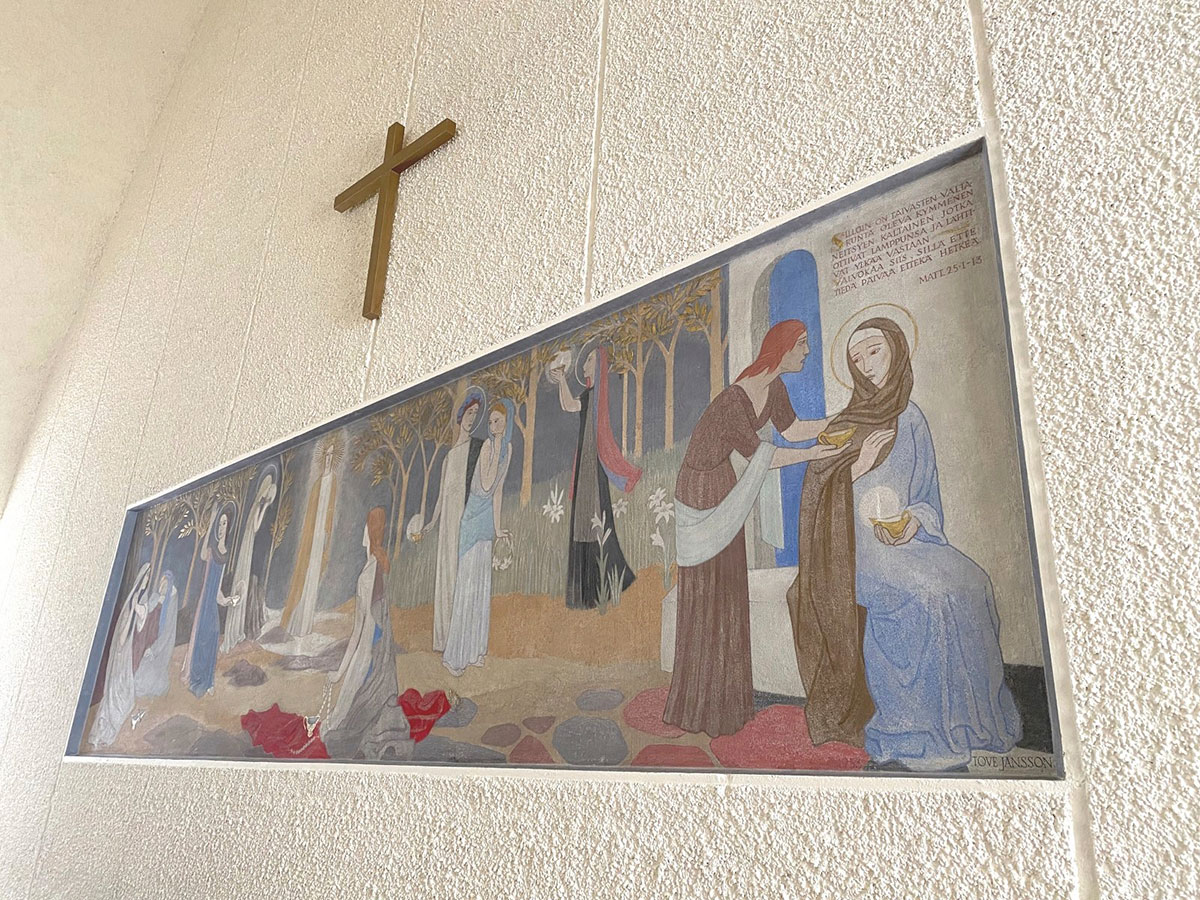
Teuva Church: Teuva municipality near Seinäjoki, western Finland houses the only altarpiece Tove Jansson ever created. Ten Virgins was painted onto the church’s stone wall, its bright colors still vibrant 71 years after its completion. Photo: Moomin Characters Ltd
Jansson’s relationships and experiences seeped into the pages of her books and comics. The inseparable Moomin duo of Thingumy and Bob represents Jansson and theatre director Vivica Bandler; the wise and steady Too-ticky, in a striped shirt, is modeled after Pietilä. Jansson’s 1968 book Sculptor’s Daughter is based on her own experiences as a child.
“She never wrote a single sentence that she hadn’t lived or felt herself. Nothing was superficial, whether it was descriptions of nature or articulating her inner life,” Karjalainen says.
During the Second World War, Jansson fell in love with Vivica Bandler. Being in love with a woman was a new and unfamiliar experience, but Jansson wrote to her friend: “It seems to me so absolutely natural and genuine. These last weeks have been like one long dance of rich adventure, tenderness, intensity.”
Today, many view Tove Jansson as a queer icon and a trailblazer in LGBTQ+ issues, and rightly so: she went against the mainstream in a time of strict normativity. Homosexuality was illegal in Finland until the 1970s, decades after Jansson first engaged in a lesbian relationship. She never married or had children. Her life was solely her own, not anyone else’s.
“She didn’t carry protest signs or banners. For her, it was just a natural life that she answered for herself,” Karjalainen says.
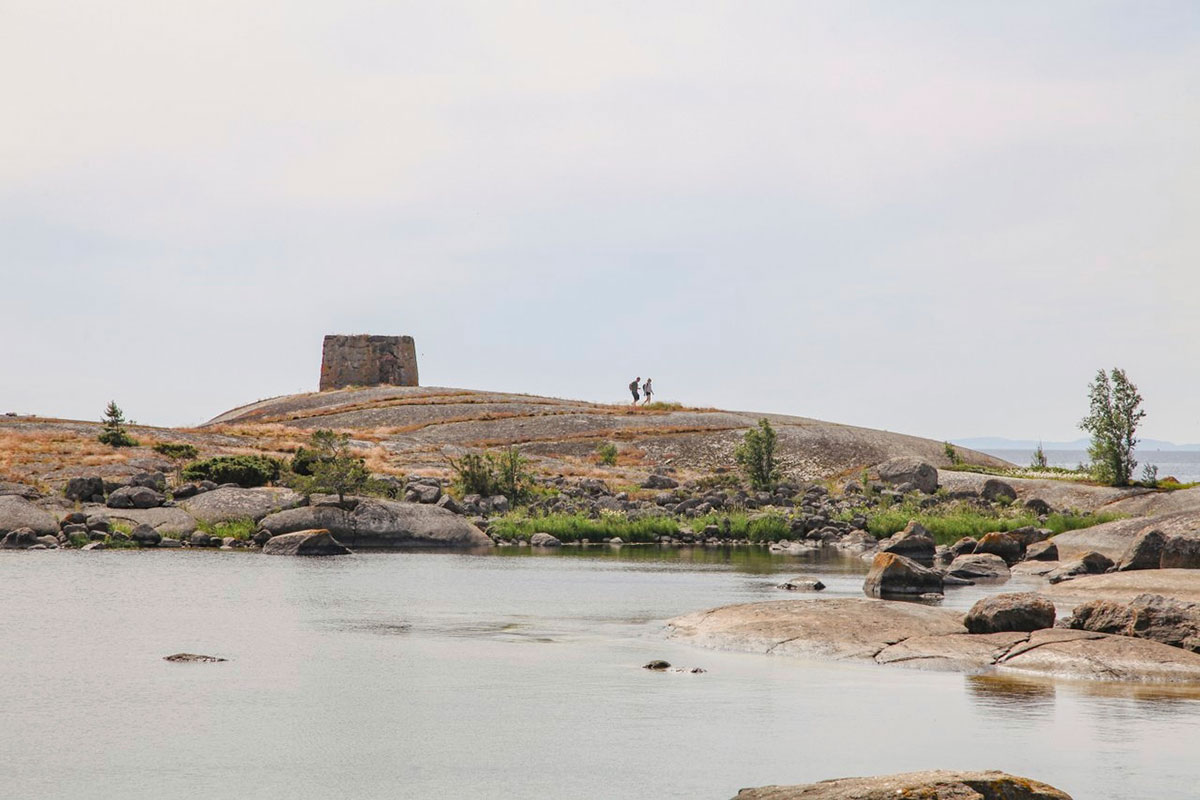
Rankki, Kotka: Jansson’s The Summer Book has been adapted into a movie that came out in 2024 starring Oscar nominee Glenn Close and featuring Golden Globe nominee Alma Pöysti. The main filming location was the former military island Rankki, off the coast of Kotka. Photo: Moomin Characters Ltd
By Kristiina Ella Markkanen, ThisisFINLAND Magazine
